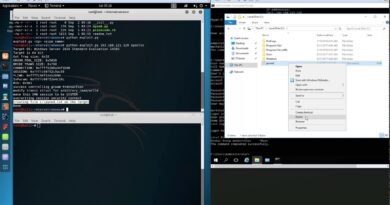How to Install and Configure yum server and yum client | dnf server and dnf client
YUM – YELLOWDOG UPDATER MODIFIED :
• The Yellow dog Updater Modified (YUM) is a package management application for
computers running Linux operating systems.
• Yum uses a configuration file at /etc/yum.conf
LAB WORK:
Configuring a YUM server and adding the info about it in at least one client
To configure a YUM server the steps are.
• Make sure that vsftpd package is installed, if not install it.
• Copy entire RHEL6 DVD to “/var/ftp/pub/rhel6” directory, where rhel6 dir is to made by us only it is not default dir.
• Make a repo file as “kt.repo”in /etc/yum.repos.d directory
• Clean the yum cache and check the package list using yum command
Let’s start with the first step
• Checking the vsftpd package is installed or not.
If it is not installed, then go to dvd’s mount point and navigate to “Packages” directory and
install it as shown below.
#mount
As we know the mount point of dvd is /media/RHEL_6, move to its location and enter into
Packages directory.
#cd /media/RHEL_6.0 i386Disc 1/
#ls |grep -i vsftpd
#rpm -ivh vsftpd2.2.2-6.el6.i686.rpm
As it is already installed, it is not being installed.
Copy entire RHEL6 DVD to “/var/ftp/pub/rhel6” directory, Where rhel6 dir is to be made by user only it is not a default dir
• First make an directory “rhel6” under /var/ftp/pub
#mkdir /var/ftp/pub/rhel6
#cd /var/ftp/pub/
#ls
• Now copy the RHEL6 DVD to /var/ftp/pub/rhel6 directory with its default permission
#cp –rvfp /media/RHEL_6.0I386Disc1/* /var/ftp/pub/rhel6
Note:- it will take around 5 minutes copy all the data, based on the DVD
• Check the directory after copying is finished
Okay, then half of our configuration is completed
Make a repo file as “kt.repo”in /etc/yum.repos.d directory
• The file which we make inside /etc/yum.reops.d, will be functioning as the repository
address and configuration file. Create the file with following details.
#vim /etc/yum.reops.d/kt.repo
Clean the yum cache and check the package list using yum command
• To clear the cache use the following command
#yum clean all
If the configuration is correct, then the following output will be displayed, otherwise there
will be some errors displayed.
Now let’s check whether our repository is functioning properly or not.
#yum list (to list all the packages in repository)
Configure the yum client and check whether yum server is responding to it.
Configuring a yum client is very simple with just three steps.
• Install ftp package , so that packages can be accessed from client
• Make a repo file /etc/yum.repo.d/ as “ktcl5.repo”
• Clean the cache and check whether yum server is responding or not Install ftp package, so that packages can be accessed from client
• Install the ftp package from rhel dvd in Packages directory.
#cd /media/RHEL_6.0 i386 Disc 1Packages
#ls |grep -i ftp
#rpm -ivh ftp-0.17-51.1.el6.i686.rpm
#rpm -q ftp
Make a repo file /etc/yum.repo.d/ as “ktcl5.repo”
• Just make a repo file like we did for server but with only one change in baseurl as shown below
#vim /etc/yum.repos.d/ktcl5.repo
Note:- baseurl =ftp://192.168.223.129/pub/rhel6 refers to the server’s ftp address
In case if yum list command is not listing the package then delete the following file in
/etc/yum.repos.d/ at client side only.
#cd /etc/yum.repos.d
#ls
#rm -f packagekit-media.repo
Clean the cache and list the packages, it will certainly solve the problem.
Working with YUM commands:
• To list the available packages in the repository
#yum list ( or) #yum list all (or) #yum list |more (to view line wise)
As we have seen first command, second will also gives exactly same output. let us see the
third command
#yum list |more
To list all the installed packages in the system.
• To view all the installed packages in the system, the syntax is
#yum list installed
To check a particular package is installed or not
• To check whether a package is installed or not the syntax is
#yum list installed package name
#yum list installed vsftpd
To install a package using yum
• Installing a package using yum does not requires full package name as in the case of rpm,
and it also automatically resolves the dependencies as well.
• The syntax for installing a package is
#yum install package name
#yum install finger* (where * means anything with name “finger”)
It will prompt you for y/n to continue, type y and continue installing the package
installing a package without being prompt for y or n, the syntax is
#yum install package name -y
#yum install finger* -y
To remove the package with yum command
• To remove the package using yum command, the syntax is
#yum remove package name
#yum remove finger -y
To update the package using yum
• To update the package using yum command, the syntax is
#yum update package name
#yum update httpd
#YUMServer
#YUMClient
#ServerConfiguration
#ClientSetup
#LinuxPackageManagement
#ARNTechTrainings
yum server and client configuration in rhel 7,dnf server,dnf client,yum server, yum client
by ARN Tech Trainings
linux ftp server




anna videos daily petandi please